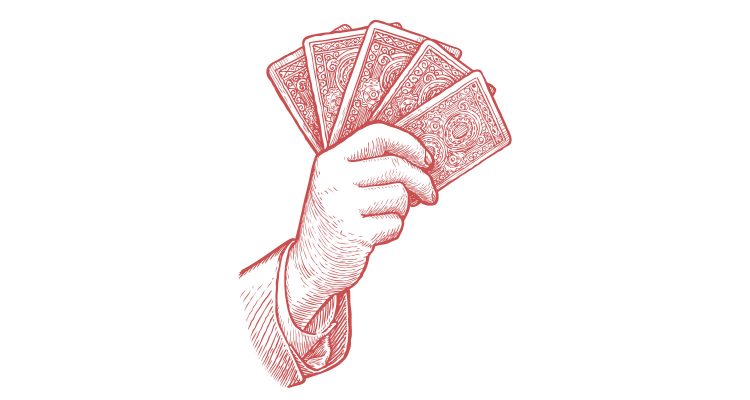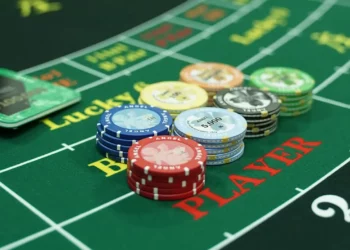Clayton Peister, Managing Director of Differential Labs, explains how casino operators can better utilize the math behind win rates to improve profitability.
Casino win rates are the dark matter of the gaming world. The current model of the universe only works if we assume that unobservable dark matter exists, and likewise the casino industry business model only works if win rates exist. At least historically, some win rates we can observe explicitly – although inaccurately – like electronic gaming win rates; some win rates we can observe indirectly like table hold; and some are unknowable like table win rate on turnover.
With the advent of bet tracking, more granular recording of electronic gaming behavior, and new data-sources like iGaming, we are getting better insights into the cloistered world of win rates. Along with these insights we can distill the behavioral and mechanical factors which influence win rates and by extension revenues.
In this article we will describe the win rates which govern our professional career, outline the factors which influence these rates and describe the role of analytics in optimizing win rates. Throughout this article, we distinguish between mechanical drivers – which operators can only diffusely manage – versus behavioral drivers over which operators exert substantial influence.
 MECHANICAL DRIVERS VERSUS BEHAVIORAL DRIVERS
MECHANICAL DRIVERS VERSUS BEHAVIORAL DRIVERS
Return-to-player (RTP), which is determined by the odds and rules of the game, is the fundamental mechanic underpinning any of the win rates. Management can only influence RTP in the set-up and mix of the floor. We think of RTP as mechanical in nature, as operators cannot influence outside of a narrowly defined range. Ignoring free-play, operators’ turnover win rates should theoretically be similar within a given market. And while turnover win rates ought to be similar, and logically this should translate to similar hold percentages, we know that this is not the case and that some properties have a consistent hold percent premium. Once adjusting for accounting differences, this hold percent premium is explained by behavioral differences.
DECOMPOSING WIN RATES
Classical probability theory is based on casino gaming and games of chance. The industry has utilized this math to understand everything from variation in hold percentages to an individual player’s luck. Unfortunately, classical probability theory only explains the probability of winning an individual hand. In our view, applying these same methods to other win rates is a corruption.
In the statistical world, classical probability theory describes data which is “normal”. If normal math had a flag, the bell-curve would be on it. Casino math, which is rooted in the probability of winning or losing a given hand, assumes win rates will follow a symmetrical bell-curve. By extension, the average must equal the median. This is true for the probability of winning a hand, but is not true for the win rate on turnover and is absolutely false for the hold percentages. With the benefit of bet tracking, we can observe this phenomenon directly.
First, take the percent of hands won by the player. In Exhibit 1, the median and average are nearly identical. As an analyst, I could be confident that with more observations the average and median would converge.


 From Exhibit 1, we can observe that there is a near equal probability both above and below the average. The above result is in line with the classic casino math.
From Exhibit 1, we can observe that there is a near equal probability both above and below the average. The above result is in line with the classic casino math.
Things start to diverge when we consider the win rate on turnover or the % of the wager won by the house or player. The win rate on turnover still looks like a bell-curve but is skewed to one side. For instance, in this data set, the most typical player lost over 2% of every wager but a handful of players won substantially, diluting the average win rate to around 0.8% (this dataset is biased blackjack).
We have observed this phenomenon in data around the globe; the typical player loses much more than the win rate suggests is likely, which is then balanced by a handful of patrons who win substantially more than expected. We recently worked with a major operator in Macau who expected to win HK$100 million from one junket room during a specific quarter but instead lost HK$200 million: a HK$300 million swing. Traditional casino math indicated that this HK$300 million swing should be a once in a century event. However, updating traditional casino math with the above skew illustrates that the risk of this HK$300 million swing should occur roughly once every five years! This vignette highlights the importance of outliers, and how they can shift the average and median win rates.

 THE IMPORTANCE OF OUTLIERS
THE IMPORTANCE OF OUTLIERS
Typically, the top 5% of winners win, on average, about 1x to 2x more than the top 5% of losing players lose. This asymmetry is illustrated in Exhibit 3.
 Generally, outliers are responsible for most properties achieving win rates which are indicated by game return-to-player. Reviewing the hold distribution illustrates this concept even more powerfully.
Generally, outliers are responsible for most properties achieving win rates which are indicated by game return-to-player. Reviewing the hold distribution illustrates this concept even more powerfully.
HOLD PERCENT
At the daily player level, we have observed a pattern similar to the distribution described in Exhibit 5 across the globe. Specifically, we can observe that the average hold rate is in line with an old percentage any table manager would recognize: 22%, but
- 45% of all players lose the majority of their bankroll, including one in four patrons who exhaust their entire bankroll;
- Consequently, there is a yawning gap between the hold percent for a typical patron (49%) versus the 22% average for the group;
- There is an extremely long tail to the left, meaning that patron upside is almost uncapped;
- The house’s upside is much more limited (capped by the patron’s bankroll).
 This asymmetry is worth the risk, as through a combination of behavior and the odds of the game, 75% of patrons lose to the house. While the pattern described above is consistent around the globe, we have noticed that high-frequency properties have less dramatic extreme wins and losses.
This asymmetry is worth the risk, as through a combination of behavior and the odds of the game, 75% of patrons lose to the house. While the pattern described above is consistent around the globe, we have noticed that high-frequency properties have less dramatic extreme wins and losses.
BEHAVIORAL IMPLICATIONS
Conventional wisdom in the industry is that hold is random and not the product of behaviors. In observing win rates and hold analytically, we have found that hold in particular is a choice. Specifically, we recommend that operators think through three fundamental decision points.
FIRST: FOCUS ON THE RIGHT PLAYERS
We have found that hold rates vary materially across segments in a consistent pattern which can be incorporated into marketing or operational initiatives. We have found that a small but meaningful segment of patrons are goal oriented.
These players are often found on the mass floor in Macau. These patrons typically want to double their bankrolls and are willing to exhaust their bankroll to achieve this goal. Retooling marketing segmentation to focus on more hold-elastic patrons holds substantial promise.
 Likewise, some players take more propositional bets and passionately follow trends, whereas some players exercise strict money management. Bet tracking enables operators to distinguish between players by play pattern. In working with operators across the globe, we have found that the reliance on assumed theoretical win rates weighs on operators’ performance. Volatility, assumed theoretical win rates and short-play all conceal a player’s true value. Bet tracking enables operators to properly ascribe value from day one.
Likewise, some players take more propositional bets and passionately follow trends, whereas some players exercise strict money management. Bet tracking enables operators to distinguish between players by play pattern. In working with operators across the globe, we have found that the reliance on assumed theoretical win rates weighs on operators’ performance. Volatility, assumed theoretical win rates and short-play all conceal a player’s true value. Bet tracking enables operators to properly ascribe value from day one.
SETTING THE RIGHT RTP
Steve Gallaway, from Global Market Advisors, a consultancy, famously advises clients that low hold strategies trump nearly everything else. While not universally true, Gallaway’s conclusion is correct. A low RTP is likely only beneficial when the patron is time constrained (think tour group segments in Macau) or when occupancy is high.
SERVICE
At the property we were involved with in Macau, we discovered that the strongest driver of hold percent was the customer net promoter score. While minimums/denom mix and game-speed are all positively correlated with hold and key ingredients to optimization, the guest experience is the foundation of hold.
Consider the following example: a patron visits a newly opened property and buys-in for her typical amount, she begins to play but is unable to get a drink, the casino isn’t fun and the dealer isn’t engaging; she leaves after a few hands. The same patron returns a year later, buys-in for her typical amount and visits the same casino except this time the service is efficient, casino buzzing and the dealer is engaging; she plays multiple shoes searching out trends across the floor.
In this example the player has many more hands on the same buy-in on the second visit thus delivering a higher hold percent. We have found that a higher hold percent generally precedes a structural ramp-up in volumes – particularly at a new property.
 FREE-PLAY ADDLES TURNOVER
FREE-PLAY ADDLES TURNOVER
There are many competing theories about the impact of free-play. After reviewing multiple properties’ marketing programs, a clear theme has emerged: issuing free-play above 33% of a player’s base spend per day delivers diminishing returns. Issuing free-play above this 33% mark actually reduces individual buy-in and addles turnover, thus distorting both hold and win-rates. Of course, this concept is not universally true for all patrons but 33% is a good starting place in the absence of player level elasticity segmentation.
MINIMUMS AND AVERAGE BET SKEW
We have found that average bet as a percent of bankroll has a dramatic impact on hold percentages. As the average bet as a percent of bankroll increases, so does the hold percent minimums/denom but, in concert, the number of hands decreases. This implies that operators should take care in setting table minimums and denom mixes.


























